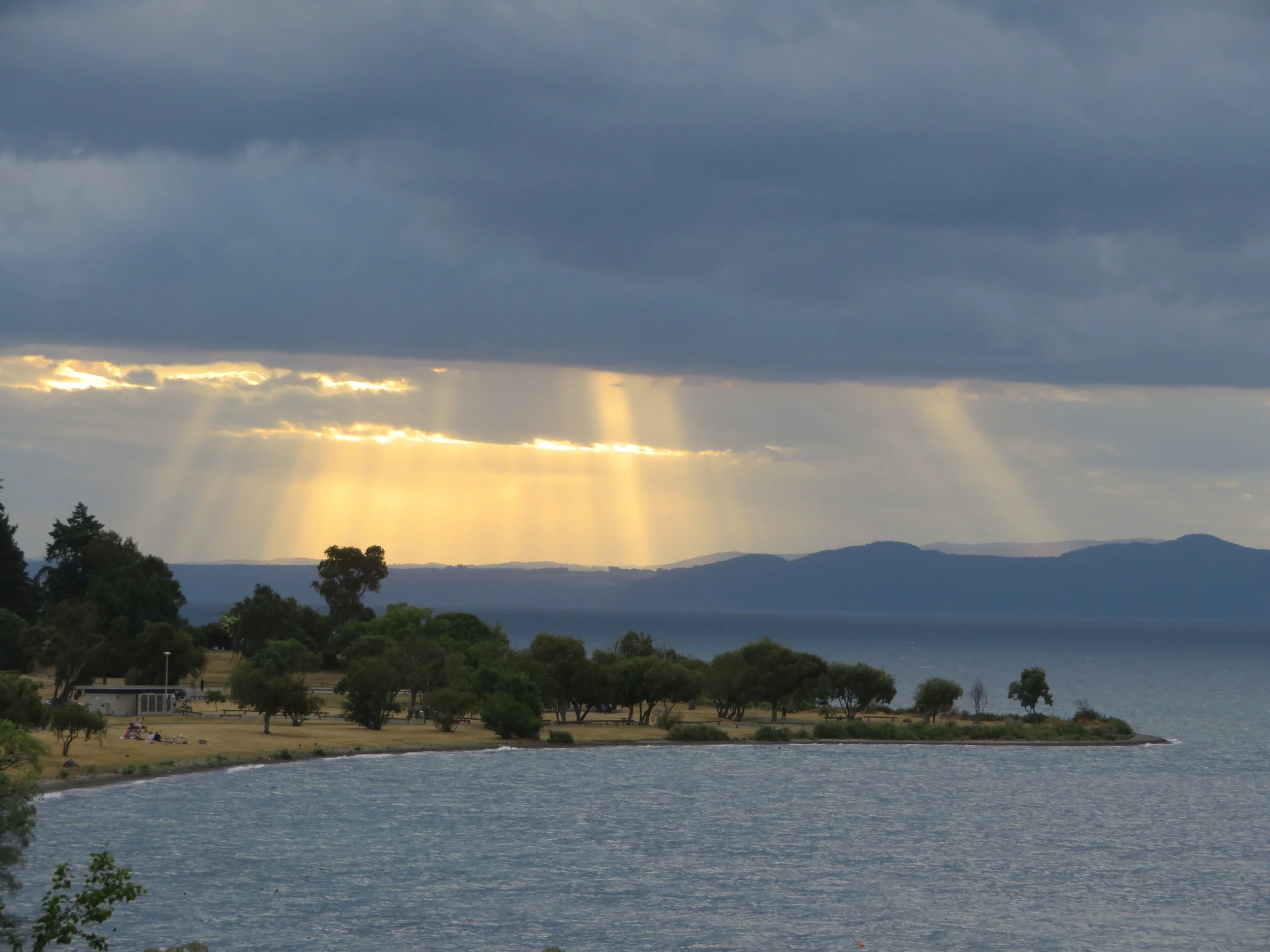Full lake boosts power
It has been a wet winter in Taupō so far which has lifted the hydro storage capacity of Lake Taupō. Photo: Pauline Chester
Power generators are happy, and the summer drought is a distant memory with more than 350mm of rain falling in Taupō over the last two months.
Lake Taupō is the main reservoir for hydro-electric power stations on the Waikato River which supply about 10% of New Zealand’s power.
Six major weather events over the past two months, delivering 351mm of rain over the lake have eased pressure on the Hydro System, taking pressure off supply over the winter months.
Rainfall figures show 65mm fell on 9 May, and 53mm from 27-29 May. On 4 June another 62mm of rain fell and a further 61mm between 10-13 June.
Another rainstorm delivered 50mm over Taupō from 27-28 June and the most recent heavy rain saw 60mm fall in Taupō on July 2-4.
Mercury manages the lake level and hydro storage via the Control Gates in Taupō and a series of storage lakes downstream.
The recent rainfall moves the lake level to 41cm above the average for this time of the year and 66cm higher than the same time last year.
Before the latest heavy rain, lake storage was 138% of average. It compares to 1 June 2024 to 30 May 2025, when inflows into Lake Taupō were the fourth lowest in 100 years.
Under resource consent conditions, Mercury is required to keep the lake level in the range of 355.85-357.25 metres above sea level, giving it 1.4 metres to play with.
On July 9, the level was sitting at 357.04 metres, still comfortably below the maximum. It has been releasing water at up to 300 cubic metres per second at the Control Gates, for the last two weeks, making downstream attractions like the Huka Falls that much more spectacular.
Mercury’s executive general manager of Wholesale Markets Tim Thompson says prior to the big rainfalls, they had taken “significant steps” to conserve storage, heading into winter.
“We looked very carefully at managing the risk of another dry winter and our team worked hard to conserve hydro storage to ensure we were well placed to continue powering New Zealand over winter.
“When the rain arrived, we were in a good position to let Lake Taupō fill quickly to improve our hydro storage.”
He says strong thermal and gas availability from other generators has also helped improve security of supply over winter.
The Waikato hydro system comprises nine hydro systems of the Waikato River. It is the main hydroelectricity contributor in the North Island, generating an average of 4140 GWh per year.
“Our hydro system is a winter-fed catchment, that means we rely on rainfall between May and September to resupply Lake Taupō.
“From January to March we reduce generation when there is lower rainfall to take pressure off the lake.”
Water levels from tributaries feeding into the Waikato River have also increased, helping to improve hydro storage.
He says the improved lake level will help maintain the country’s security of supply during the colder, higher-demand months and reduce concerns of a repeat of last year’s energy shortfall.

